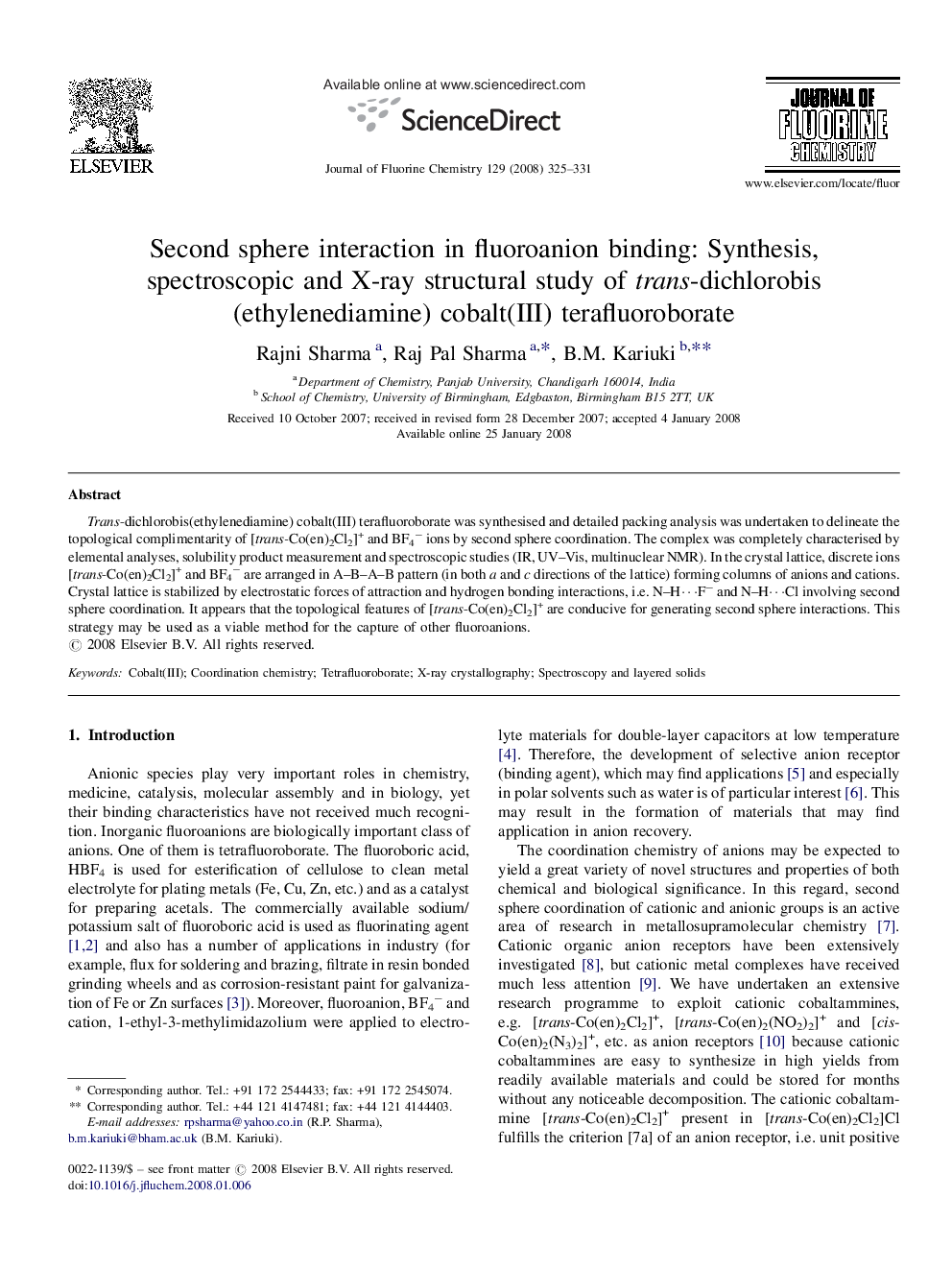| Article ID | Journal | Published Year | Pages | File Type |
|---|---|---|---|---|
| 1315474 | Journal of Fluorine Chemistry | 2008 | 7 Pages |
Trans-dichlorobis(ethylenediamine) cobalt(III) terafluoroborate was synthesised and detailed packing analysis was undertaken to delineate the topological complimentarity of [trans-Co(en)2Cl2]+ and BF4− ions by second sphere coordination. The complex was completely characterised by elemental analyses, solubility product measurement and spectroscopic studies (IR, UV–Vis, multinuclear NMR). In the crystal lattice, discrete ions [trans-Co(en)2Cl2]+ and BF4− are arranged in A–B–A–B pattern (in both a and c directions of the lattice) forming columns of anions and cations. Crystal lattice is stabilized by electrostatic forces of attraction and hydrogen bonding interactions, i.e. N–H⋯F− and N–H⋯Cl involving second sphere coordination. It appears that the topological features of [trans-Co(en)2Cl2]+ are conducive for generating second sphere interactions. This strategy may be used as a viable method for the capture of other fluoroanions.
Graphical abstractCationic metal complexes as second sphere ligands: synthesis, spectroscopic and X-ray structural study of trans-dichlorobis (ethylenediamine)cobalt(III) terafluoroborate.The newly synthesized complex salt [trans-Co(en)2Cl2]BF4 is composed of complex cation [trans-Co(en)2Cl2]+ and BF4− in the solid state. A strong network of intermolecular N–H⋯F interactions between the cation and anion as well as intramolecular N–H⋯Cl interactions within the cations stabilize the crystal lattice.Figure optionsDownload full-size imageDownload as PowerPoint slide
